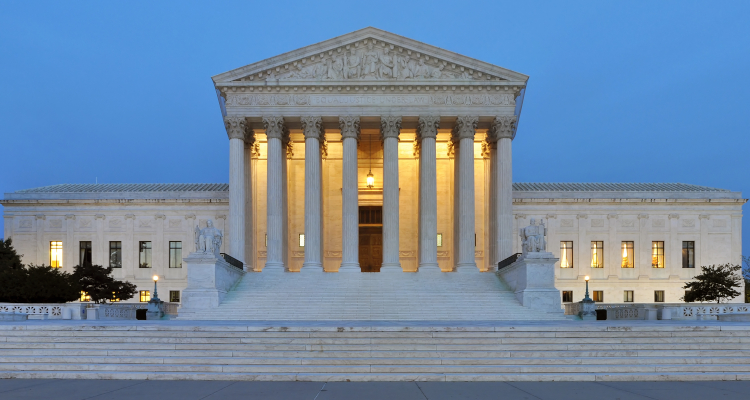The Supreme Court building in Washington, D.C. Photo Credit: Joe Ravi
In a ruling that may have major implications for the music industry – especially amid the advent of artificial intelligence – the Supreme Court has determined that the licensing of Andy Warhol artwork depicting Prince, itself based upon a more than 40-year-old copyright-protected photograph, isn’t transformative enough to constitute fair use.
The Supreme Court today affirmed an appellate court’s ruling in favor of photographer Lynn Goldsmith, who had for the better part of a decade been engaged in a legal battle with the Andy Warhol Foundation for the Visual Arts (AWF). In brief, the latter received $10,000 from licensing to Condé Nast “an orange silkscreen portrait” of Prince created by the late Warhol.
But the artist had crafted the portrait (and, taking things a step further, 15 other works in a series) by using as his source a 1981 photo of the Purple Rain act snapped and copyrighted by Goldsmith. Goldsmith, for her part, had received $400 and a source-photo credit after licensing her shot so that Warhol could provide the initial purple silkscreen portrait for Condé Nast’s Vanity Fair in 1984. The arrangement was meant to be a once-off deal.
When Condé Nast approached Warhol’s namesake foundation to relicense the purple portrait in 2016, however, it learned of the series’ other artwork and opted to use the separate orange silkscreen portrait. Goldsmith wasn’t compensated for the usage despite owning the photograph from which the artwork had derived, and the longtime photog is said to have only learned of the unauthorized agreement upon seeing the appropriate Prince tribute magazine cover seven years ago.
In affirming the prior ruling in Goldsmith’s favor, the Supreme Court (Justices Sotomayor, Thomas, Alito, Gorsuch, Kavanaugh, Barrett, and Jackson joined in the majority opinion) found that while the orange Prince portrait “adds new expression to Goldsmith’s photograph…the first fair use factor still favors” the professional.
(This first factor concerns “the purpose and character of the use, including whether such use is of a commercial nature or is for nonprofit educational purposes.”)
“The purpose of that use is, still, to illustrate a magazine about Prince with a portrait of Prince,” Justice Sotomayor penned. “Although the purpose could be more specifically described as illustrating a magazine about Prince with a portrait of Prince, one that portrays Prince somewhat differently from Goldsmith’s photograph (yet has no critical bearing on her photograph), that degree of difference is not enough for the first factor to favor AWF, given the specific context of the use.
“To hold otherwise would potentially authorize a range of commercial copying of photographs, to be used for purposes that are substantially the same as those of the originals,” the justice continued. “As long as the user somehow portrays the subject of the photograph differently, he could make modest alterations to the original, sell it to an outlet to accompany a story about the subject, and claim transformative use.”
Moreover, expanding “transformative use” to cover “any use that adds some new expression, meaning, or message…would swallow the copyright owner’s exclusive right to prepare derivative works,” the majority opinion drove home.
“It will not impoverish our world to require AWF to pay Goldsmith a fraction of the proceeds from its reuse of her copyrighted work,” Justice Sotomayor wrote in the opinion, which is making headlines after OpenAI’s CEO acknowledged that creators including music industry professionals should benefit from AI. “Recall, payments like these are incentives for artists to create original works in the first place.”
The RIAA promptly reached out to Digital Music News with a statement about the “thoughtful” Supreme Court decision – which could impact certain non-AI copyright lawsuits involving high-profile industry acts.
“We applaud the Supreme Court’s considered and thoughtful decision that claims of ‘transformative use’ cannot undermine the basic rights given to all creators under the Copyright Act,” said RIAA CEO Mitch Glazier. “Lower courts have misconstrued fair use for too long and we are grateful the Supreme Court has reaffirmed the core purposes of copyright.
“We hope those who have relied on distorted – and now discredited – claims of ‘transformative use,’ such as those who use copyrighted works to train artificial intelligence systems without authorization, will revisit their practices in light of this important ruling,” concluded Glazier.

